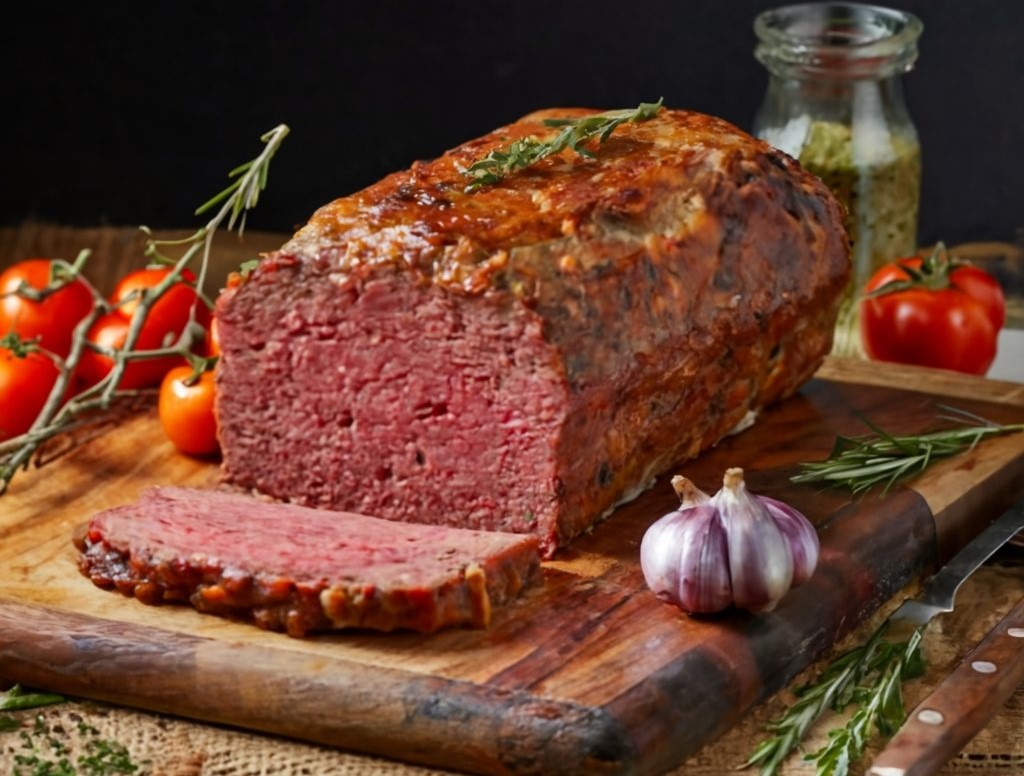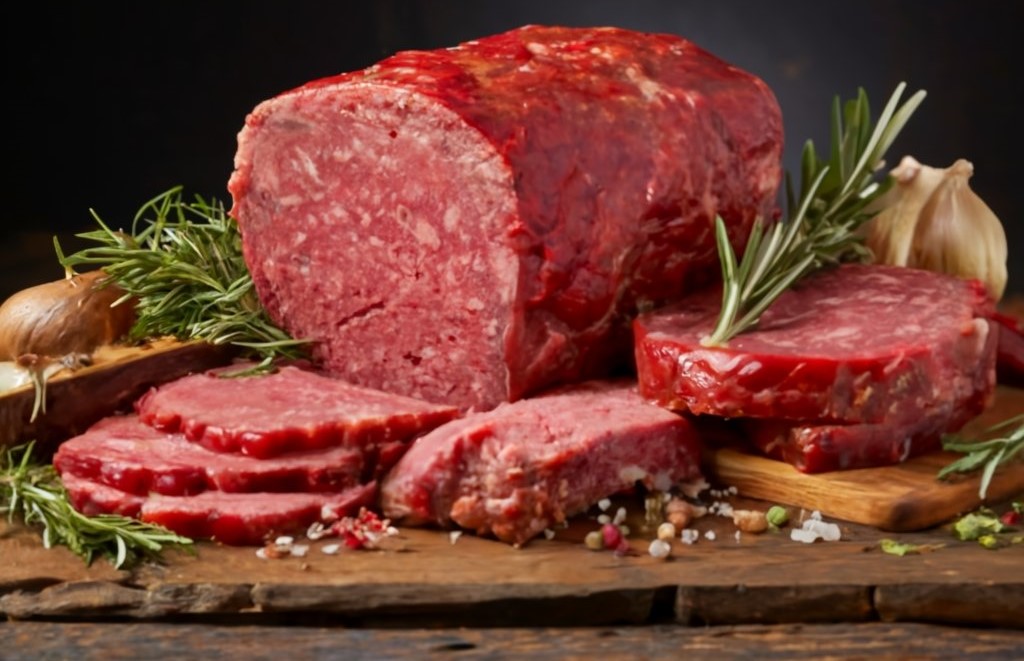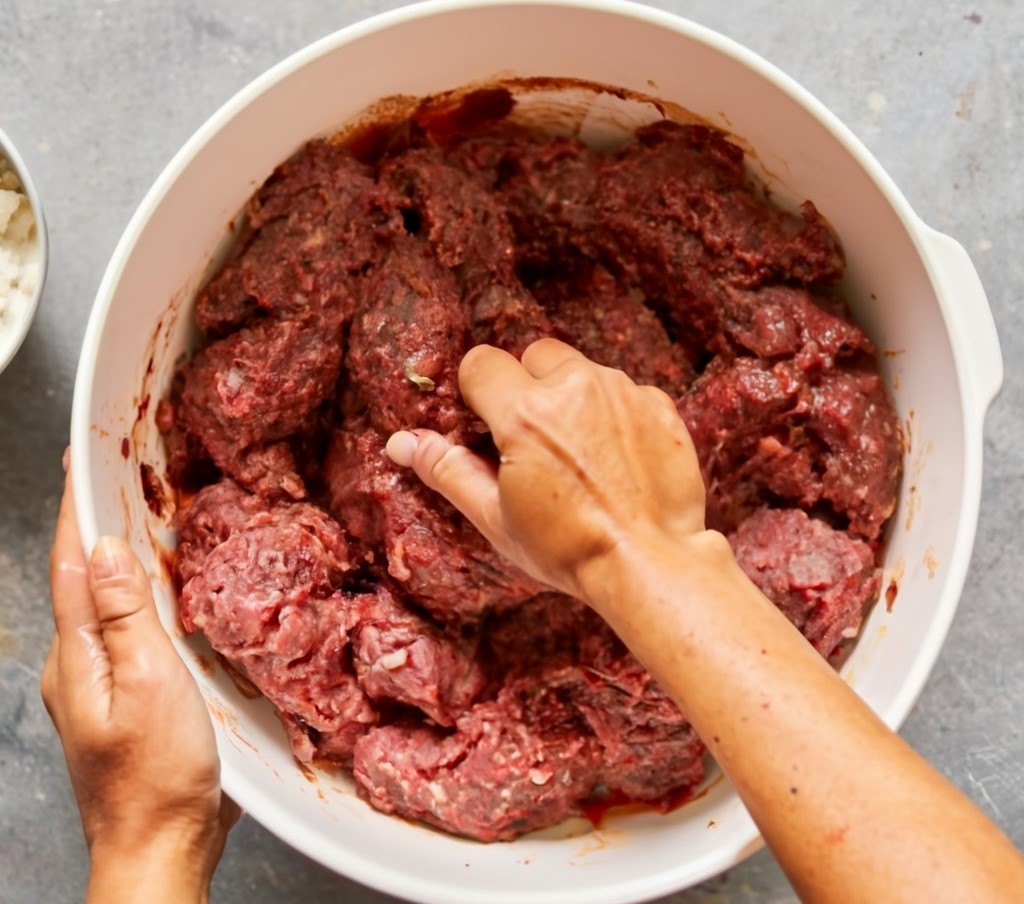Part 1: Introduction to Smoked Meatloaf
Introduction to Smoked Meatloaf

Smoked meatloaf isn’t just a dish; it’s a culinary adventure that tantalizes the taste buds with its unique blend of flavors and textures. This dish has risen in popularity, becoming a beloved variant of the classic meatloaf, revered in households and BBQ joints alike. But what exactly catapults smoked meatloaf into a league of its own? Discover more about unique cooking techniques in our comprehensive guide to perfect chicken and dumplings texture at Cooking Techniques Website.
The Evolution of Meatloaf
Meatloaf, in its traditional form, has long been a staple in American cuisine, known for its comforting and homey appeal. However, the introduction of smoking techniques has revolutionized this humble dish. The smoky aroma and rich flavors imparted by the smoker add an irresistible depth to the meatloaf, making it more than just a simple meal – it’s a celebration of flavor.
Part 2: Selecting the Right Ingredients
Choosing the Best Steak

When it comes to crafting an unforgettable smoked meatloaf, the choice of meat is paramount. The ideal selection is a balance between fat and lean meat, as this combination ensures both flavor and moisture. Ground beef, particularly the 80/20 mix (80% lean, 20% fat), is a popular choice. It provides enough fat to keep the meatloaf juicy without being overly greasy. “For a richer taste, consider blending different types of ground meat, like pork or veal, with your beef. Explore various meat combinations in our comprehensive guide to steak nachos.
Best Cuts for Smoking
The cut of the meat plays a crucial role in the final outcome. Learn more about meat textures in our expert tips for chicken and dumplings texture.While ground beef is the go-to, incorporating cuts like flank steak or skirt steak can add a more complex flavor. These cuts are known for their rich flavors and ability to absorb marinades and seasonings, making them excellent choices for a smoked meatloaf.
Ground Meat Varieties
Experimenting with different ground meats can elevate your smoked meatloaf to new culinary heights. Ground pork adds a subtle sweetness, while ground veal brings a delicate texture. For those looking for a bolder flavor, ground lamb or bison are excellent choices. The key is to find a combination that suits your palate while ensuring the meatloaf remains cohesive during the smoking process.
Essential Ingredients for Flavor
Beyond the meat, the ingredients you mix in are crucial for flavor and texture. Fresh herbs like parsley or thyme, along with minced garlic and onions, infuse the meatloaf with aromatic depth. Spices such as paprika, cumin, or a touch of cayenne pepper can add warmth and complexity.
Spices and Seasonings
The right blend of spices and seasonings can transform your meatloaf from good to great. A combination of salt and black pepper is essential, but don’t be afraid to experiment with other spices. Smoked paprika can enhance the smoky flavor, while a hint of garlic powder adds a savory note.
Binders and Fillers
Binders like eggs and fillers such as breadcrumbs or oatmeal are crucial for the meatloaf’s texture. They help to keep the meatloaf moist and prevent it from falling apart during smoking. Soak your breadcrumbs in milk for a few minutes before mixing them in to ensure a tender, juicy meatloaf.
Part 3: Preparing the Meatloaf

Mixing and Shaping
The magic of a great smoked meatloaf lies in how you mix and shape it. The goal is to combine your ingredients in a way that ensures each slice is packed with flavor and holds together perfectly during the smoking process.
Achieving the Perfect Consistency
To start, gently mix your ground meat with the spices, seasonings, binders, and fillers. It’s crucial to mix just enough to combine the ingredients evenly, but not so much that the meat becomes tough and overworked. The mixture should be moist but not overly wet, holding together well enough to shape. If it’s too dry, a splash of milk can help; if too wet, a bit more breadcrumbs will do the trick.
Shaping Techniques
Once mixed, it’s time to shape your meatloaf. You can form it by hand on a baking sheet or use a loaf pan as a mold. However, for smoking, consider shaping the meatloaf directly on a wire rack. This allows the smoke to circulate around the entire meatloaf, infusing it with flavor from all sides. Aim for a consistent thickness throughout, as this ensures even cooking.
Creating the Glaze
A glaze can add a beautiful finish and an extra layer of flavor to your smoked meatloaf. While traditional meatloaf might use a tomato-based glaze, smoked meatloaf pairs wonderfully with a barbecue sauce glaze.
Sweet vs. Savory Glazes
You can opt for a sweet glaze, which might include ingredients like brown sugar or honey, or a savory one with ingredients like mustard or Worcestershire sauce. The choice depends on your taste preference and the flavor profile you’re aiming for.
Homemade vs. Store-Bought
While homemade glazes offer the benefit of customization, don’t shy away from using a store-bought barbecue sauce. Many high-quality sauces are available that can save time and still deliver fantastic flavor. Whichever route you choose, brush the glaze onto the meatloaf during the last 30 minutes of smoking to prevent burning.
Part 4: Smoking Process
Setting Up the Smoker
The key to a perfectly smoked meatloaf is in how you set up and maintain your smoker. Whether you’re using a traditional smoker, a pellet grill, or a regular grill with a smoker box, the process begins with preheating your smoker to the ideal temperature.
Temperature and Time
For smoked meatloaf, a consistent low and slow approach is best. Aim to maintain your smoker at around 225°F to 250°F. This temperature range allows the meatloaf to cook through evenly without drying out, while also absorbing the smoky flavors. The total cooking time will vary depending on the size of your meatloaf but expect it to take around 3 to 4 hours.
Types of Wood for Smoking
The type of wood you choose for smoking can greatly influence the flavor of your meatloaf. Woods like hickory or oak impart a strong, robust smokiness, while fruitwoods like apple or cherry offer a milder, sweeter smoke. Experiment with different woods to find the flavor profile that best suits your taste.
Monitoring the Cooking Process
Regularly monitoring your meatloaf is crucial to achieve the perfect result. Use a meat thermometer to check the internal temperature, aiming for a final temperature of 160°F to 165°F. This ensures that the meatloaf is fully cooked and safe to eat, while still remaining juicy and tender.
Internal Temperature Guidelines
It’s important to remember that the meatloaf will continue to cook slightly after it’s removed from the smoker due to residual heat. Therefore, removing it a few degrees before it reaches the target temperature can prevent overcooking.
Basting and Glazing
During the smoking process, basting the meatloaf with its juices or a marinade can help to keep it moist. In the final 30 minutes of cooking, apply your chosen glaze to the meatloaf, allowing it to caramelize and form a delicious crust.
Part 5: Serving and Pairing
Creative Serving Ideas
Once your smoked meatloaf is cooked to perfection, it’s time to think about presentation and accompaniments. How you serve this dish can elevate it from a simple family dinner to a memorable culinary experience.
Plating Techniques
Consider slicing the meatloaf thickly and serving it on a warm plate. Drizzle a little extra glaze over the top for added flavor and a glossy finish. Garnish with fresh herbs like parsley or chives to add a pop of color and freshness.
Side Dishes
The right side dishes can complement the rich, smoky flavors of the meatloaf. Classic options like creamy mashed potatoes, steamed green beans, or a crisp garden salad work well. For something different, try serving with roasted vegetables, a tangy coleslaw, or a hearty bean salad.
Beverage Pairings
Pairing the right beverage with smoked meatloaf can enhance the dining experience. A robust red wine like a Zinfandel or a Shiraz pairs beautifully with the smoky, meaty flavors. For beer lovers, a dark stout or a smoky porter can be a great match. Non-alcoholic options like iced tea or a sparkling apple cider also complement the dish well.
Wines and Beers
When selecting wines, look for those with enough body and flavor intensity to stand up to the smokiness of the meatloaf. Beers with a hint of sweetness or a smoky undertone can also balance the flavors nicely.
Non-Alcoholic Options
For a non-alcoholic pairing, consider beverages with a slight acidity or sweetness to cut through the richness of the meatloaf. Lemonade, flavored sparkling waters, or even a homemade fruit punch can be refreshing choices.
Part 6: Frequently Asked Questions
Frequently Asked Questions
Smoked meatloaf, while a delightful twist on a classic, often brings up several questions, especially for those new to smoking or meatloaf preparation. In this section, we’ll tackle some of the most common inquiries to help you perfect your smoked meatloaf.
- What’s the best way to keep smoked meatloaf moist?
- To ensure your smoked meatloaf remains moist, avoid overmixing the meat, use a mix of meats with a good fat content, and consider adding moist ingredients like soaked breadcrumbs or milk. Basting during the smoking process can also help retain moisture.
- Can I make smoked meatloaf without a smoker?
- Absolutely! You can use a regular grill set up for indirect cooking and add wood chips for smoke. The key is to maintain a consistent low temperature and provide enough smoke to flavor the meatloaf.
- How long should I smoke meatloaf?
- Typically, smoked meatloaf takes about 3 to 4 hours at 225°F to 250°F. However, the most important factor is the internal temperature, which should reach 160°F to 165°F.
- What are some good wood choices for smoking meatloaf?
- Hickory and oak provide a strong smoky flavor, while fruitwoods like apple or cherry offer a milder, sweeter smoke. Experiment to find your preferred taste.
- How can I add more flavor to my smoked meatloaf?
- Incorporate a mix of spices and herbs into your meat mixture, use a flavorful glaze, and choose a wood that complements the meatloaf’s flavor profile.
- What are some creative ways to serve smoked meatloaf?
- Besides traditional slices, consider making smoked meatloaf sandwiches or serving it crumbled over salads or baked potatoes for a unique twist.
Part 7: Conclusion

Final Thoughts on Smoked Meatloaf
As we conclude our journey through the savory world of smoked meatloaf, it’s evident that this dish is more than just a twist on a traditional recipe. It’s a fusion of classic comfort and bold, smoky flavors, a testament to the versatility and creativity in modern cooking. From selecting the right blend of meats and seasonings to mastering the smoking process, each step in creating smoked meatloaf is an opportunity to infuse love and flavor into every bite.
Smoked meatloaf stands out as a dish that can bring people together, perfect for family dinners, weekend barbecues, or special occasions. Its hearty, comforting nature, combined with the allure of smoked flavors, makes it a hit among both traditionalists and adventurous eaters. The beauty of this dish lies in its adaptability – you can stick to the basics or experiment with different ingredients and techniques to make it your own.
We hope this guide has inspired you to try your hand at making smoked meatloaf and has equipped you with the knowledge and confidence to make it a standout dish in your culinary repertoire. Whether you’re a seasoned smoker or a novice in the kitchen, smoked meatloaf is a rewarding and delicious endeavor. So gather your ingredients, fire up your smoker, and get ready to enjoy a slice of comfort infused with the irresistible charm of smoke. Happy cooking, and even happier eating!
Smoked meatloaf, with its rich flavors and comforting essence, is a dish that transcends the ordinary, offering a delightful experience to anyone who takes a bite. Whether you’re looking to impress guests or simply want to enjoy a hearty meal with your family, this guide provides all you need to create a smoked meatloaf that’s sure to be remembered. So go ahead, give it a try, and watch as this smoky twist on a classic becomes a new favorite in your home.
